Revolutionary eco airplane of the future unveiled by airbus
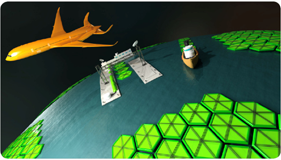
Use of nanotechnology, biotechnology, information technology and cognitive science may bring flocks of strange green flying machines
Passengers and planes may be fully integrated in the plane of the future to manage vast amounts of new passengers in a vast tourism market is one vision of the future as Airbus –unveiled their eco-concept airplane at the Farnborough air show this week.
Extraordinary features of the craft and new passenger management systems may include:
Intelligent transportation systems could organise optimal journeys so that all waste, error and delay are accounted for so that the traveller need only follow real time instructions (delivered by a personal wireless communications device that allows detailed tracking.
As well as fuel efficiency, all parts of the lifecycle of aircraft will need to take account of their environmental impact. Recycling and re-engineering may be as important as the initial manufacturing processes.
A ‘Cryoplane’, fuelled by hydrogen, is a potential aircraft of the future.
Energy harvesting is another option for the future. We will no longer need to use energy that has been ‘produced’, rather it will be energy that has been ‘harvested’ from, for example, the heat your body gives the seat or bed in your cabin.
In the more immediate future solar power could provide electricity on board the aircraft once it has reached altitude.
If you give certain algae seawater, sun and carbon (the same carbon we are trying to get rid of), they start growing and become a ‘biomass’ plant. Airbus believes that biomass fuels could provide up to 30% of all commercial aviation jet fuel by 2030.
Passengers could be calmly pre-seated in modules (or capsule compartments) before the plane actually arrives. These compartments would be loaded onto the plane as it lands. Airbus engineers describe this as the ‘Aircraft Pod Concept’.
Aircraft could follow each other far more closely. They could even fly in formations, like migrating birds, in a sky managed harmoniously on a worldwide scale. Imagine the skylines of the future with V- formation flocks of aircraft flying silently, flying faster, but using less fuel.
Opaque or transparent walls Materials of the future can include additional functionality that provides transparency on command, negating the need for windows. This smarter structure would help to make the aircraft lighter and more cost-efficient while giving the passenger 360 degree views of the skies.
The future passenger cabin will of course be ecological. No more non- renewable materials like metal and plastic, but plant fibres, fully recyclable, that can be grown to the desired shape from responsible, sustainable resources.

But Airbus’ experts in aircraft materials, aerodynamics, cabins and engines have also come up with the design that is an ‘engineer’s dream’, to meet the expectations of the passengers of the future. More than a flight of pure fantasy, The Airbus Concept Plane illustrates what air transport could look like in 2050 – even 2030 if advancements in existing technologies continue apace.
- Lightweight body, semi-embedded engines, a U-shaped tail and lightweight intelligent body all feature to further improve environmental performance or ‘eco-efficiency’. The result: lower fuel burn, a significant cut in emissions, less noise and greater comfort.
- Longer and slimmer wingspan – It is configured with high aspect-ratio wings (ultra long and thing) to better glide through the air. They also improve fuel efficiency and the flow of air over the surface of the wing to reduce drag and fuel burn.
- Intelligent materials – It is built using new lightweight ‘smart’ materials that sense the load they are under. This will make a lighter aircraft and reduce both fuel burn and emissions.
- Manufacturing methods – New manufacturing methods will reduce the cost of building the aircraft in spite of the new advance materials and complex shapes.
- Engines – The engines will be more reliable, quieter and fuel-efficient. They are installed at the rear of the aircraft, far from the cabin, which increases cabin comfort (lower noise levels). It is also more quiet externally thanks to the shielding from the empennage (tail surfaces). The positioning of the engines, at the rear and semi-embedded, fully optimises the aircraft for lower fuel burn. They can be semi-embedded because advances will have reached such a level that engine reliability will diminish the need for easy access.
- Fuselage (central body of the aircraft) – The fuselage of the concept plane is not a simple tube, but is curved and shaped to provide more space inside for new cabin configurations in specific areas, with better aerodynamics outside to improve flight. It would be an all-composite aircraft to take advantage of composite’s ability to be shaped efficiently during manufacture.
- Doors – The entrance doorways will be built as double doors, for faster access to ensure quick and easy boarding.
- Empennage (tail section of the aircraft) – The aircraft has a U-shaped tail that acts as a shield to reduce noise. The concept plane does not include a vertical tail, as seen on the planes of today – required because engines are installed on the wings, so it is needed for directional stability in case of engine failure. The engines of the future will have no risk of failure, so can be placed at the rear and remove the need for a vertical tail.
- Electrical systems –The aircraft will continuously monitor its own state of health, predict any need for maintenance and automatically schedule this well in advance. The electronics and other systems on board will be very reliable, needing minimum or zero maintenance.
Valere Tjolle
 United Kingdom
United Kingdom United States
United States Asia Pacific
Asia Pacific

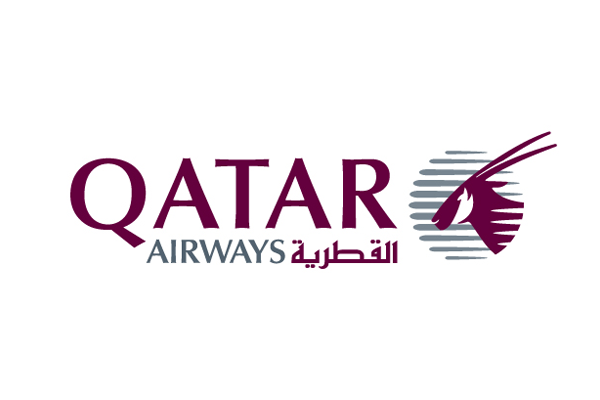















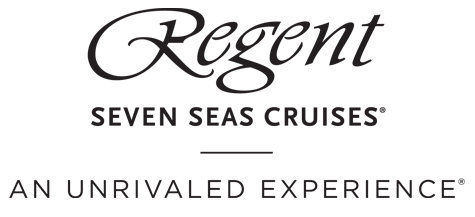















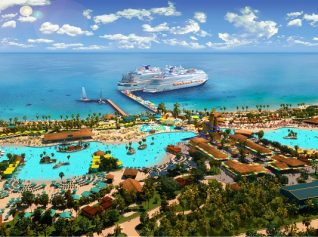


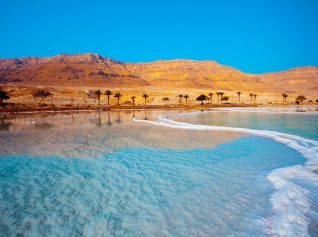
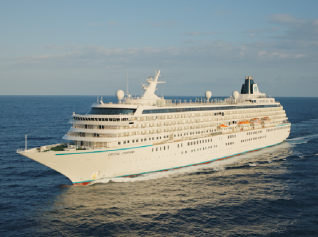






BA suspending all Heathrow to Abu Dhabi flights
Unexpected wave rocks cruise ship
Report: Cruise guest died after ship lashed in heavy storm
British teen in serious condition after paraglider collision
JetBlue scraps London Gatwick flights